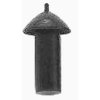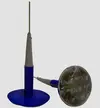bamamate
Elite Member
- Joined
- Oct 5, 2012
- Messages
- 2,360
- Reaction score
- 52
- Points
- 48
- Location
- Allford, FL/Dothan, AL
Back in the day, I saw internal patches fail on car tires. We would gummy plug them............
Have also seen gummy plugs fail but they were almost always a slow leak and usually the tread was about gone anyhow.
So I've seen internal patches and external gummy plugs fail.
Are there still places in the U.S. that can vulcanize?
Have also seen gummy plugs fail but they were almost always a slow leak and usually the tread was about gone anyhow.
So I've seen internal patches and external gummy plugs fail.
Are there still places in the U.S. that can vulcanize?





